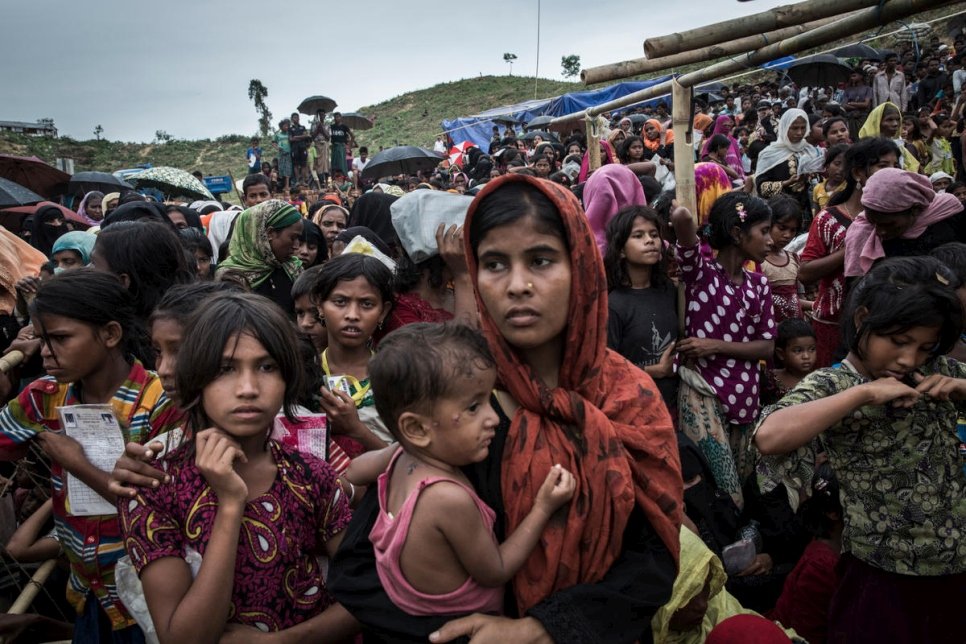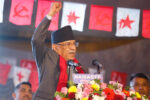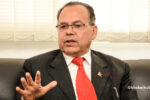Over a million Rohingyas lived in Myanmar before the crisis in 2017. A majority of them are Muslims. Hundreds of thousands of Rohingyas have fled and are still fleeing their homeland fearing persecution, in search of freedom.
The UN said that the Rohingyas are the world’s most persecuted community. The UN High Commissioner for human rights Zeid Ra’ad Al Hussein called it “a textbook example of ethnic cleansing”.
Rohingyas
‘Rohingya’ means ‘Arakanese’ in the East Bengali dialect spoken by the people of North Arakan, ‘Rohang’ is a local phonological variant of ‘Roshang’ which is the region’s name in Bengali.
Most of the Rohingyas are descendants of migrant workers from the Chittagong area of the erstwhile Bengal brought by the British to Burma but they consider themselves ethnic to the region with a few of them dating back their ancestry there to the 8th century A.D with influence from the Arabians, Mughals and the Portuguese.
However, even now many of the native Burmese address them as ‘Kalar’ which means Indian.
Their persecution
Persecution of the Rohingyas began with the dawn of military rule in Myanmar in 1962. In 1964 the junta dissolved the separate district the Rohingyas had which was recognized by the democratic government which preceded the new military rule in 1961 and merged it with the state of Rakhine.
The military had been cracking down on Rohingyas frequently since then which were justified as an effort to control impending insurgencies.
Rohingyas started entering India in the ’90s. According to the UNHCR office in New Delhi, there are more than 16,000 Rohingya refugees taking shelter in India most of whom have been coming to India for a decade and not in the recent wave of 2017.
The Myanmar government effectively revoked the Rohingyas of their citizenship in 1982 and officially de-recognized them as an ethnic group of the region.
The Rohingyas are actively discriminated against and face a lot of violence, harassment and arson from the military.
They are denied their voting rights, healthcare and education, they are also not allowed to practice Islam or Hinduism freely.
The government banned them from the rest of Myanmar including movement within the state of Rakhine. There are also Buddhist nationalist vigilantes going on every now and then killing Rohingyas.
Aung San Suu Kyi became the de – facto leader of the government in 2016 who has even won the Nobel Peace Prize for bringing democracy to Myanmar but only to be criticized by most of the western powers for not doing anything about a growing Rohingya crisis and also only to be held captive following the recent military coup.
Her government had no control over the Rakhine state as it was under the jurisdiction of the military which it retained when it ceded to a democratic regime in 2011 after 50 years of military rule.
They still had control over the security forces, the police and key cabinet positions in the government. Under the Constitution, the commander-in-chief of Myanmar’s Armed Forces didn’t report to Aung San Suu Kyi and he couldn’t be fired, so there’s nothing Suu Kyi could do about it.
The military coup almost seems inevitable now, with such power dynamics. The economic development in Myanmar is largely military-led. Since the 1990s, the military has aggressively grabbed land from Rohingyas and from other minorities.
In 2012, laws were amended in favor of the corporate acquisition of the land. In September of 2017, the government completed developing a 100-acre economic zone in Rakhine’s Maungdaw district, which thousands of Rohingyas had fled from that same month and there was also little to no solidarity from the majority Buddhist populace of the country until the coup had happened.
The Indian government is planning to invest in such economic zones which are located in and around the Rakhine state owing to India’s “act east policy”. World leaders are now being urged to implement sanctions against the military itself, to try to push them to end their campaign against the Rohingyas.
There are US and EU arms embargoes against Myanmar, but it continues to receive financial aid, weapons, and training from allies including China, India, Russia and even Israel.
Rohingya refugee crisis
The current crisis has been apparently set off by the Arakan Rohingya Salvation Army, an armed guerrilla outfit that has been active since 2016 who claimed responsibility for an attack on police posts and an army base in Rakhine in August of 2017.
Following this came the massacres, since then more than 7,00,000 Rohingyas have fled their homes into Southeastern Bangladesh, the number of whom has grown to 9,00,000 and more now, to join the 3 lakh who fled in the last 30 years.
On November 23, 2017, the governments of Myanmar and Bangladesh signed an agreement to repatriate the Rohingya refugees but there are some serious issues to consider before the repatriation takes place. First, resettlement has to be voluntary.
Why should Rohingya prefer to move into a refugee camp in a hostile environment to depend upon safety from the very people who persecuted them and leave a comparatively safe country?
Second, Myanmar’s verification process for a refugee to return. The Rohingyas who fled for Bangladesh were left under dire circumstances.
How many would have had the safety and leisure to look for the documents which could prove their identity, before leaving.
Third, Bangladesh regards the Rohingyas as a financial burden on their country and also as a potential security threat.
There is a lot of talk about Rohingya terror but little actual evidence. The Indian government’s concerns about Rohingya terrorism seem to come from the Pakistani origin of ARSA’s founder.
They signed the agreement because, from their point of view, any deal that might move the Rohingyas back across the border is a good deal, without having given much thought to how they would achieve it.
Fourth, For Aung San Suu Kyi’s government, the refugee agreement was a public relations exercise to ward off international condemnation.
Even if she had been inclined towards solving the issue, the military would not have come to terms with her government to stop the assault on Rohingyas and now the whole country is in their hands!
Repatriation had already started which had a few breaks due to the pandemic and some legal constraints but continues with no thought on the above-mentioned issues.
India and the Rohingyas
Rohingyas started entering India in the ’90s. According to the UNHCR office in New Delhi, there are more than 16,000 Rohingya refugees taking shelter in India most of whom have been coming to India for a decade and not in the recent wave of 2017.
They have refugee cards and some even long-term visas who work as laborers and rent makeshift huts in ghettos.
The Indian government has turned its back on any new Rohingyas entering the country as we can observe an outpour of tens and thousands of them.
The Rohingyas are reportedly being sent back by the Indian forces at the border who have let them in on humanitarian grounds till the July of 2017 when the Ministry of Home Affairs has called all of the Rohingya who were already in India by then as illegal immigrants and labeled them as “a threat to national security with Pak-based connections” with no evidence.
The ministry has directed all the state governments to identify and deport them on 8th of August, 2017, against which a stay was appealed in the supreme court but even as it recognized sending the Rohingyas back would be life-threatening to them, it still refused to overturn MHA’s advisory in April, 2021.
Countries across the world have systems to differentiate between innocent victims of persecution from militant or economic migrants. India has to devise a procedure to deal with refugees, banning a whole community cannot be the solution.
If individual refugees don’t pass the test, you can always jail or deport them. Under international customary law, the principle of nonrefoulement is binding on states whether they have signed the Refugee Convention or not.
Sanctions against Myanmar’s military might be the only option unless the carnage stops, humanitarian aid groups are allowed back into Rakhine State, United Nations investigators are permitted to do their job there and the Rohingyas are restored safely to their homes as full citizens of Myanmar.
After all the criticism the Indian government sent some relief assistance to refugees in Bangladesh and also had signed a strange agreement with Myanmar to supply prefabricated houses for returning Rohingya refugees but has been reluctant to even budge a little and is treating the Rohingyas the same way Myanmar has done, branding them as a threat, terrorists.
There is a lot of talk about Rohingya terror but little actual evidence. The Indian government’s concerns about Rohingya terrorism seem to come from the Pakistani origin of ARSA’s founder.
It might be an issue for the government to look into as extremist Islamic groups like ISIS could take advantage of the Rohingyas position, but it should not be the reason to order the deportation of all Rohingyas in India. Accusing a community of being terrorists is very dangerous.
They may find themselves as victims of doubt and mistrust and lose social acceptance. Rohingyas in India live in Jammu, Delhi, Hyderabad, Chennai, Jaipur, and Mewat.
Like other refugee groups in the country, the Rohingyas sustain themselves in near destitution with some support from refugee rights NGOs and with little to no aid from the government.
They are among the poorest migrants in the country, doing blue-collar jobs such as cleaning feces off railway tracks, clearing drains, digging at construction sites, and as rag pickers. The Rohingyas already in India help new arrivals set up homes, find jobs and apply for refugee status.
The way forward
The Indian government, instead of focusing on expelling some poor refugees, would be better off in ensuring that they do not become refugees in the first place or helping create conditions for their safe return.
This requires active and value-based diplomacy, which New Delhi seems to have shunned. Deportation will mean logistical coordination with the home country, but Myanmar does not consider the Rohingyas as citizens and with the military in power it is unlikely to have a change of heart.
The securitization of refugees will only make them more vulnerable to adopting radical means to self – determination.
If India truly wants Myanmar to be a pathway to South – East Asia it will need a whole new foreign policy outlook towards the country that does not give whatever the military junta asks for but instead in a way that checks its free hand over the country and help transform it into a true democracy while balancing China in the act.
The management of the Rakhine State and its people display a state failure that has extended over several decades. We also know that the state has failed to stand up for the protection and welfare of the people and has shown itself as a weak rather than a potent force.
At present, with the backing of democracies from around the world, the Organization of Islamic Cooperation (OIC) member countries, UN organizations and human rights organizations that lobby for them, Rohingyas have many allies abroad but none in the country they call home.
Sanctions against Myanmar’s military might be the only option unless the carnage stops, humanitarian aid groups are allowed back into Rakhine State, United Nations investigators are permitted to do their job there and the Rohingyas are restored safely to their homes as full citizens of Myanmar.









Comment